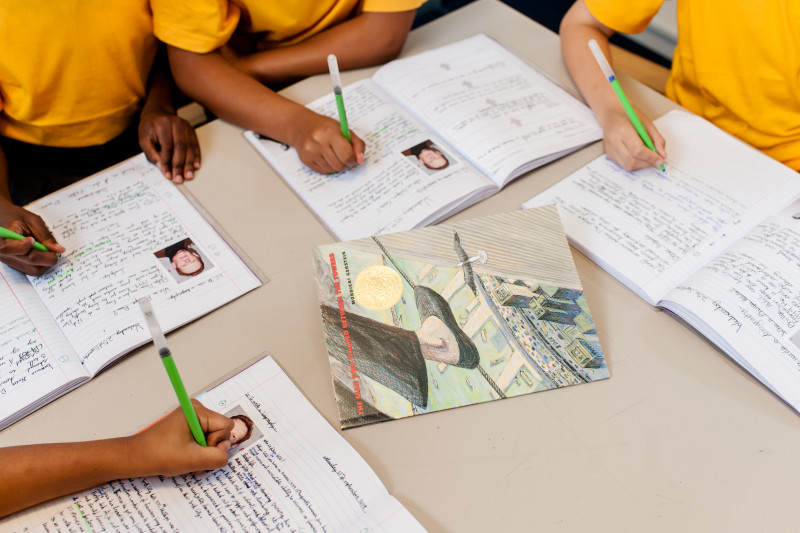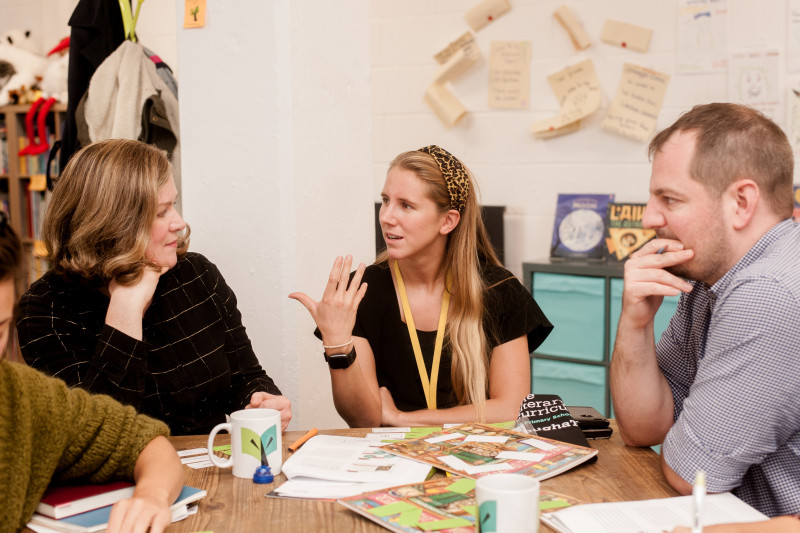Posted on: 21/06/2024
We know that the second half of the Summer Term is a busy time for assessment in primary schools. As the academic year begins to draw to a close, there is a focus on ensuring that end-of-year assessment judgements accurately reflect children’s attainment across a range of subjects.
For the assessment of English, we know that many of our member schools choose to use our RATE resources – see here for a previous blog focused on how to use RATE – while others use frameworks produced by their local authority or multi-academy trust, for example. Whichever assessment resource your school chooses to use, a robust moderation process is important to support accuracy and consistency in teacher judgements. However, moderation processes require careful thought and preparation to ensure that they are truly supportive and effective; without this, we risk moderation feeling judgemental and intimidating or becoming a tick-box performative task that teachers do not see the value in.
Over the next two blog posts, we’ll explore how to lead and engage in rigorous and purposeful moderation conversations with a focus on Writing. In this first blog post, we will focus on the value of the moderation process and key considerations when preparing for moderation conversations. In the following blog post, we will explore a step-by-step process that can be used to underpin and guide a moderation conversation.

Through moderation conversations, teachers can reach a more consistent agreement on what the attainment of this statement looks like. This can then contribute to the accuracy and consistency of overall assessment judgements.

Moderation is also important to help counteract bias. We all hold biases as human beings and when making assessments, our day-to-day experiences of a child can affect our thought processes and judgements. For example, we may teach a child who was new to speaking English in September and who has made remarkable progress in Writing over the course of the year. When assessing the child, we may instinctively recall their starting points; this might affect our ability to recognise how far they have come. An additional pair of eyes can help to focus us purely on the child’s attainment against an assessment framework and can help to reduce the influence that any bias we hold might have on our judgements.
Finally, moderation processes do not need to be purely summative; including a formative element means that we can take advantage of a valuable opportunity to move learning forward. We can identify key priority areas for a child and decide on strategies to address these. In doing so, we support progress for that specific pupils as well as often for other pupils who may also benefit from these strategies.
When moderation is done well, it feels supportive and developmental, yet purposeful and rigorous at the same time. Achieving this balance requires careful thought at the preparation stage as we make decisions around exactly what our moderation process will look like. Useful questions to ask ourselves here are:
When and where will moderation conversations take place?
Who will be involved in the conversations?
How will moderation sessions be structured?
How much time will we have for moderation conversations?
How many children will we moderate?

There are no ‘right’ answers to this set of questions and what works best for moderation in one school may look different in another. In some schools, it may be possible to hold year group or individual teacher moderation conversations during the school day led by a member of SLT. In another school, it might work better for collaborative moderation conversations to form part of phase meetings led by the phase leader. Another school may find that a whole staff meeting approach works best, with SLT and the English lead on hand to guide the process.

When making these decisions, it’s important to consider the capacity and resources across our school. For example, there is little point in us planning moderation conversations during the school day if we know that cover for teachers may not be available; this might prompt us to consider using phase meetings instead. It’s also essential to consider our staff team’s levels of expertise. For example, a cross-year group collaborative approach to moderation may work well if we have a staff team with secure expertise around assessment frameworks, but a more guided approach may be needed if many teachers are still developing this understanding.
When deciding how many children to moderate, a ‘less is more’ approach supports rigour, purpose and overall impact. This can feel counter-intuitive to us as teachers – it can be tempting to try and moderate as many children as possible in the given time. However, this can mean we end up rushing through the process, meaning that our conversations are ultimately less effective in supporting accuracy and consistency.
Instead, it can be much more impactful to focus on a smaller set of pupils and delve deeply and rigorously into their writing, developing a much more robust understanding of their level of attainment. This then leads to a wider impact as we can apply the understanding we have gained during moderation to our assessment of other children. For example, once we have rigorously discussed how one child has demonstrated that they are consistently working at the expected standard for their year group, we can use this knowledge to inform our assessment of other children who are working at a similar level.
Once we have made our key decisions around our school Writing moderation process, we can then turn our attention to what makes an effective moderation conversation and how to achieve this. This will be our focus for part 2 of this blog, where we will share a step-by-step approach that can be used to guide an impactful writing moderation conversation.
Posted in: Moderation | Curriculum
KS: R & KS1
Year Group: Year 1